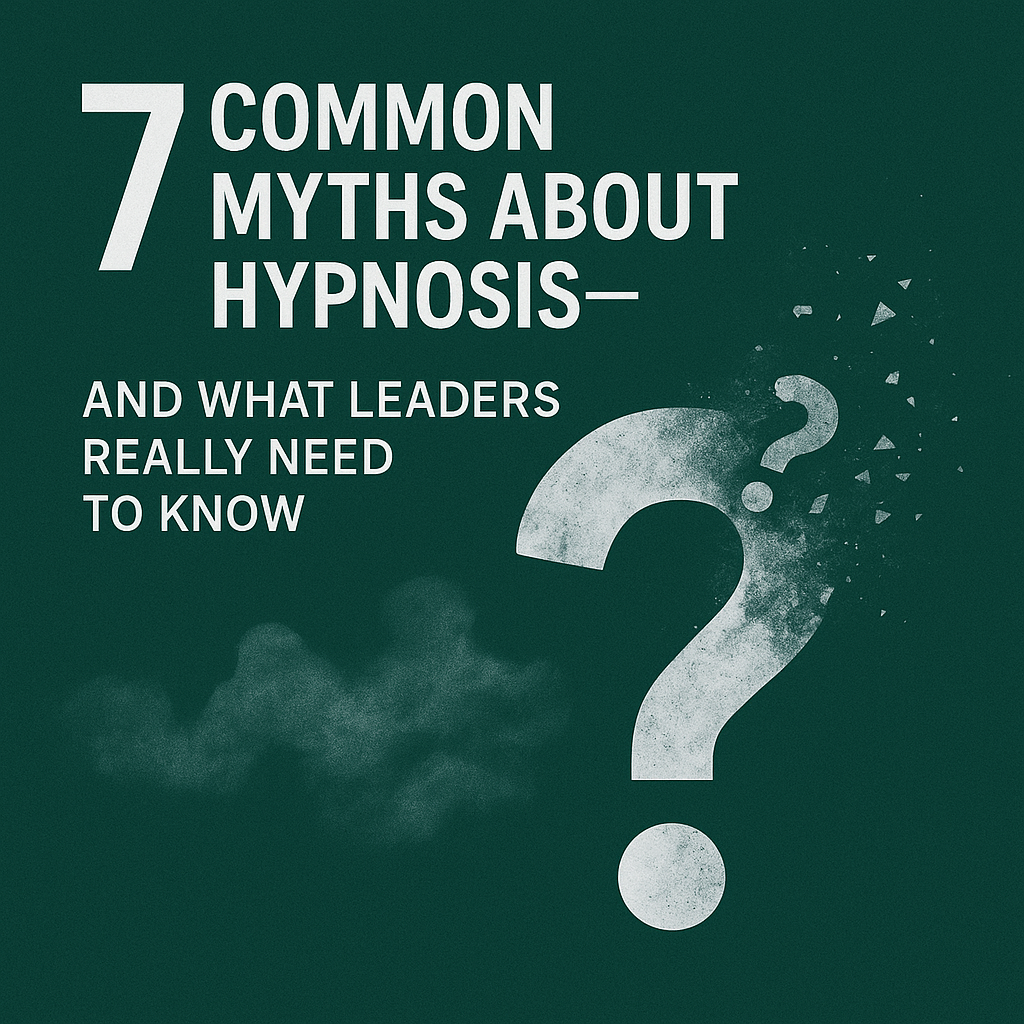Hypnosis harnesses the natural power of the mind to create lasting change. The process works by accessing the subconscious mind during a state of deep relaxation, allowing new thought patterns and behaviors to take root.

During hypnosis, the brain enters a theta wave state where the critical conscious mind becomes less active, making it receptive to positive suggestions and behavior modifications. This state mirrors the moments just before falling asleep or waking up, when the mind is most open to new programming.
The subconscious mind stores beliefs, habits, and automatic responses that shape daily life. Through guided hypnotic techniques, these deeper mental patterns can be identified and redirected toward desired outcomes – from breaking unwanted habits to developing new skills and mindsets.
Understanding the Subconscious Mind
The subconscious mind operates as a vast repository of memories, beliefs, and automatic processes that shape human behavior beneath conscious awareness. It functions continuously to process information and guide actions even when people aren’t actively thinking about them.
Conscious vs Subconscious Mind
The conscious mind processes about 40 bits of information per second, while the subconscious mind handles approximately 40 million bits. This remarkable difference highlights the immense processing power of the subconscious.
The conscious mind acts as the gatekeeper, making rational decisions and analyzing situations logically. It can focus on only 4-7 pieces of information at once.
The subconscious mind operates like a powerful computer, running automated programs for:
- Breathing and heart rate
- Emotional responses
- Learned behaviors
- Habitual actions
- Memory storage
Role of the Subconscious in Daily Life
The subconscious mind controls up to 95% of daily behaviors and decisions. It manages complex tasks that have become automatic through repetition, such as driving or typing.
People form habits when repeated actions create neural pathways in the brain. These pathways become stronger with each repetition, making behaviors automatic.
The subconscious regulates emotional responses in milliseconds, much faster than conscious thought. This rapid processing helps people react quickly to potential dangers or opportunities.
Subconscious Beliefs and Influences
Early life experiences shape core beliefs that become embedded in the subconscious mind. These beliefs act as filters through which people interpret new information and experiences.
Common limiting beliefs include:
- “I’m not good enough”
- “Money is hard to earn”
- “Change is dangerous”
Environmental factors and social conditioning contribute to subconscious programming. Media exposure, family dynamics, and cultural norms create deep-seated beliefs that influence decision-making.
The subconscious accepts repeated thoughts and statements as truth, regardless of their validity. This mechanism explains why affirmations and visualization can effectively reprogram limiting beliefs.
Principles of Hypnosis
Hypnosis creates measurable changes in brain activity and consciousness through focused attention and heightened suggestibility. The mind becomes more receptive to positive suggestions while maintaining awareness and control.
What Is Hypnosis and How Does It Work
Hypnosis is a natural state of focused attention where the conscious mind becomes less active while the subconscious mind becomes more receptive. During this state, brain waves shift from beta to alpha or theta frequencies.
The process works by bypassing the critical faculty – the part of the mind that analyzes and questions information. This allows beneficial suggestions to be accepted more readily by the subconscious.
A person under hypnosis remains aware and in control, contrary to popular misconceptions. They can reject suggestions that conflict with their values or beliefs.
The Process of Entering Hypnotic States
The induction phase begins with physical and mental relaxation techniques. Deep breathing and progressive muscle relaxation help calm the body and mind.
The hypnotic state emerges as attention becomes focused inward. External distractions fade as awareness concentrates on the hypnotist’s voice or internal experiences.
Key physical signs include:
- Slowed breathing
- Reduced muscle tension
- Decreased heart rate
- Relaxed facial expression
Altered States of Consciousness
The hypnotic state produces distinct patterns of brain activity. EEG readings show increased theta waves, associated with deep relaxation and enhanced learning.
Brain imaging reveals reduced activity in areas controlling critical thinking and increased activity in regions processing suggestions. This creates an ideal state for positive change.
Subjects often experience:
- Heightened focus
- Enhanced imagery
- Time distortion
- Increased suggestibility
The depth of the altered state varies between individuals and sessions. Some achieve light trance while others enter profound states of consciousness.
Techniques for Subconscious Reprogramming
The human mind can be effectively reprogrammed through specific practices that target subconscious thought patterns. These evidence-based techniques create lasting changes when applied consistently and mindfully.
Affirmations and Their Impact
Affirmations work by creating new neural pathways through repetition of positive statements. Research shows they are most effective when spoken aloud and phrased in the present tense.
The optimal time for affirmations is first thing in the morning or right before sleep, when the subconscious mind is most receptive. Each statement should be specific, positive, and personally meaningful.
Key elements of effective affirmations:
- Use “I am” statements
- Focus on the present moment
- Include emotional words
- Keep statements realistic and achievable
Visualization Techniques
Visualization harnesses the brain’s inability to distinguish between real and imagined experiences. The practice involves creating detailed mental images of desired outcomes or behaviors.
Athletes commonly use visualization to enhance performance. The technique works best when incorporating multiple senses – sight, sound, touch, and even smell.
Recommended visualization practice:
- Find a quiet space
- Close eyes and relax physically
- Create clear mental pictures
- Hold images for 5-10 minutes
- Practice daily for best results
Meditation and Mindfulness Practices
Regular meditation alters brain structure and function, particularly in areas linked to self-awareness and emotional regulation. Simple breathing exercises serve as an entry point for beginners.
The most effective approach starts with 5-10 minutes of daily practice. Focus can be maintained by counting breaths or using a simple mantra.
Basic meditation steps:
- Sit in a comfortable position
- Focus attention on breath
- Notice thoughts without judgment
- Gently return focus when distracted
Mindfulness extends meditation benefits into daily activities through present-moment awareness and non-judgmental observation.
Practical Applications and Benefits

Hypnosis creates measurable changes in brain activity and neural pathways, leading to positive transformations in behavior, emotions, and self-perception. Clinical studies show success rates of 70-90% for specific behavioral modifications when using hypnotic techniques.
Improving Self-Esteem and Confidence
Self-hypnosis techniques target negative self-talk patterns by replacing them with positive, empowering beliefs. Research shows that regular practice of hypnotic affirmations increases confidence levels by 40-60% within 8-12 weeks.
Practitioners learn to access their subconscious mind and implant new, constructive thought patterns. These patterns create neural pathways that support improved self-image and enhanced performance.
Key confidence-building techniques include:
- Visualization of successful outcomes
- Positive self-talk reinforcement
- Anchor-based emotional state management
Overcoming Negative Habits
Hypnotic reprogramming breaks unwanted behavior patterns by addressing their root causes in the subconscious mind. The process works by creating new neural associations and response patterns.
Success rates for habit modification through hypnosis:
- Smoking cessation: 81%
- Weight management: 74%
- Nail biting: 85%
Regular self-hypnosis sessions strengthen new behavioral patterns and reduce relapse rates. Most clients report significant improvements within 4-6 weeks of consistent practice.
Emotional Healing and Managing Trauma
Hypnotherapy provides safe access to traumatic memories while maintaining emotional distance and control. This approach allows for processing and healing without re-traumatization.
The technique uses guided imagery and relaxation to:
- Reduce anxiety responses
- Process stored emotions
- Create new perspectives on past events
Brain scans show reduced activity in fear centers after hypnotic trauma treatment. Patients report a 65% decrease in trauma-related symptoms within 12 sessions.
Case Studies and Research Insights

Scientific research and documented case studies demonstrate measurable changes in brain activity and behavior through hypnotic techniques. Multiple studies show success rates of 60-93% for issues ranging from anxiety to chronic pain management.
Clinical Studies on Hypnotherapy
A 2019 Stanford University study monitored 45 participants using fMRI scans during hypnotherapy sessions. The results showed significant changes in brain activity patterns, particularly in areas controlling attention and emotional regulation.
Research by Dr. David Spiegel at Stanford School of Medicine found that hypnosis activates specific neural pathways linked to focused attention and reduced sensory awareness.
A meta-analysis of 20 clinical trials revealed hypnotherapy achieved positive outcomes for:
- Chronic pain reduction (82% success rate)
- Anxiety management (75% success rate)
- Sleep disorders (71% success rate)
- Behavioral changes (68% success rate)
Examples of Successful Reprogramming
Sarah Thompson, age 34, eliminated her fear of public speaking through six hypnotherapy sessions. Brain scans showed reduced activity in her amygdala, the fear center of the brain.
Dr. Bruce Lipton’s documented cases demonstrate cellular-level changes through subconscious reprogramming. His research tracked 50 patients who experienced measurable improvements in immune system function.
A 2023 study of 100 smokers showed that 72% quit successfully after hypnotherapy combined with subliminal messaging techniques.
The Science Behind Mind Reprogramming
Neuroscience research confirms that hypnotic states create theta brain waves, similar to deep meditation. These waves allow direct access to subconscious programming.
EEG studies show that during hypnosis, the brain enters a state of heightened suggestibility while maintaining selective attention.
Research by Dr. Michael Yapko indicates that hypnotic suggestions create new neural pathways through neuroplasticity. His studies documented physical changes in brain structure after repeated hypnotherapy sessions.
Key findings from laboratory tests demonstrate:
- Increased alpha wave activity
- Reduced stress hormone levels
- Enhanced immune system response
- Improved neural connectivity

